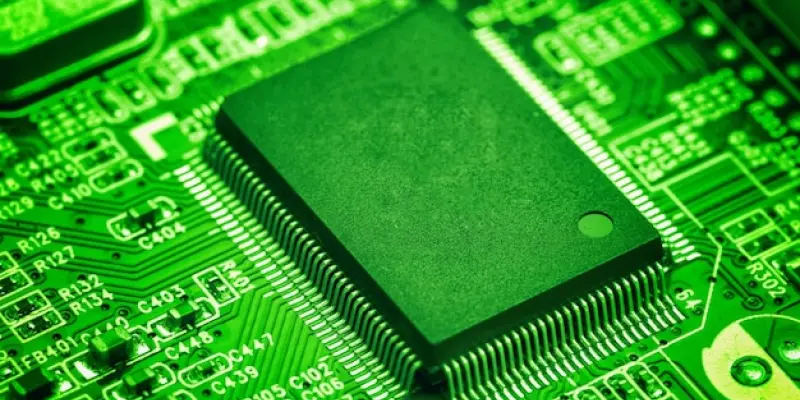The development of artificial intelligence (AI) technologies has long been driven by the pursuit of more efficient and powerful processing capabilities. NVIDIA’s latest advancements play a significant role in elevating desktop PC performance to new levels. By integrating TensorRT AI acceleration into GeForce RTX GPUs, NVIDIA promises a profound upsurge in AI applications’ productivity, potentially doubling performance over traditional methods like DirectML. This breakthrough aims to address persistent challenges faced by developers eager to maximize hardware potential without sacrificing versatility or adopting cumbersome specialized frameworks. As AI’s role in various sectors expands, the implications of these technology improvements on everyday PC users are as compelling as they are transformative.
The Power of TensorRT in AI Acceleration
Optimizing Inference: The AI Performance Boost
TensorRT’s role in enhancing AI workloads is rooted in its ability to optimize inference—a critical phase in artificial intelligence processes. The integration of TensorRT with the Windows ML framework delivers improved execution layers that leverage the power of all RTX GPUs, significantly expanding AI processing efficiencies. Developers have often faced the dilemma of choosing between universal frameworks that fall short in terms of performance or investing in maintaining specialized routes. TensorRT alleviates this tension by offering over 50% better performance for AI tasks compared to DirectML, taking advantage of recent advancements in GPU capabilities. These improvements are not merely theoretical; they translate into practical benefits, such as reduced library file sizes and just-in-time optimizations. Such optimizations enhance the capabilities of existing hardware, providing a smoother, high-performance experience without the need for immediate hardware upgrades.
Furthermore, users can expect more responsive and versatile AI applications across diverse systems, fostering innovation and experimental freedom. By reducing the complexity traditionally associated with high-efficiency frameworks, TensorRT encourages developers to explore AI’s full potential. Projects that once seemed prohibitively resource-intensive can now be approached with confidence, ensuring that AI’s capabilities are accessible to a broader developer audience. This strategy represents a shift in how AI technology can be employed across countless applications, effectively democratizing access to high-level AI tools on more widely used platforms. NVIDIA’s integration efforts reflect its commitment to seamless performance improvements, aligning technical breakthroughs with real-world usability and developer-friendly interfaces.
Streamlining the AI Ecosystem
NVIDIA’s endeavors extend beyond GPU integration, embodying a comprehensive suite of software advancements. The introduction of LM Studio, Topaz Video AI, and AutoDesk VRED featuring DLSS 4 underscores this initiative, enhancing not just AI processing but also video processing capabilities. These tools are complemented by new Network Interface Modules (NIMs), AI Blueprints, and Project G-Assist plugins, all aimed at broadening AI applications’ functionality within NVIDIA’s ecosystem. These expansions ensure that NVIDIA’s AI solutions are robust, sophisticated, and adaptable, delivering tailored solutions across new and evolving technological landscapes.
By enriching the platform with these tools, NVIDIA not only enhances its hardware’s performance but also empowers users to fully reap the benefits. This multifaceted approach positions developers to implement cutting-edge AI capabilities, drive computational efficiencies, and tackle complex challenges with ease. Through comprehensive integrations, NVIDIA fortifies its position not just as a hardware provider but as a complete ecosystem that supports a wide array of applications in professional, entertainment, and educational spheres. These integrations serve as a testament to NVIDIA’s strategy to sync advancements in hardware with pioneering software innovations, thus providing a holistic performance ecosystem capable of adapting to diverse use cases.
Towards Enhanced Usability and Efficiency
Developers and Users: Navigating the New AI Landscape
NVIDIA’s focus on improving usability and efficiency within its AI solutions is apparent when exploring how developers and end-users interact with this emerging landscape. The seamless hardware selection and immediate performance updates facilitated by TensorRT mean developers navigate less complexity when deploying AI solutions. This simplification does not compromise performance or versatility; rather, it empowers developers to execute tasks with higher efficiency and lower latency. For users, these advancements translate into a more fluid user experience, where the enhancements in AI-driven scenarios lead to tangible improvements in daily operations and interactions.
Another crucial aspect is how TensorRT supports a wide range of applications without requiring extensive configuration. By offering ready-to-deploy solutions with compatible interfaces, NVIDIA caters to a broad spectrum of needs and preferences, accommodating flexibility that is often missing in heavily specialized frameworks. The importance of this advancement cannot be understated, as it appeals to both large enterprises investing in high-tech solutions and small developers exploring niche applications, making cutting-edge AI technology more inclusive and accessible.
Future Considerations: Sustaining Innovation
TensorRT plays a pivotal role in enhancing AI workloads through its ability to optimize inference, a crucial phase of artificial intelligence processes. Its integration with the Windows ML framework boosts execution layers that exploit the power of all RTX GPUs, greatly improving AI processing efficiencies. Developers often face the challenge of choosing universal frameworks that lack performance or investing in specialized paths. TensorRT eases this dilemma by delivering over 50% improved performance for AI tasks compared to DirectML, leveraging advancements in GPU capabilities. These developments yield tangible benefits like smaller library file sizes and just-in-time optimizations, enhancing existing hardware’s capabilities without the need for immediate upgrades. As a result, users experience more responsive AI applications across various systems, fostering innovation and experimentation. By simplifying complex frameworks, TensorRT allows developers to unlock AI’s full potential, making high-level AI tools more accessible on widely used platforms, thus democratizing AI technology effectively.

